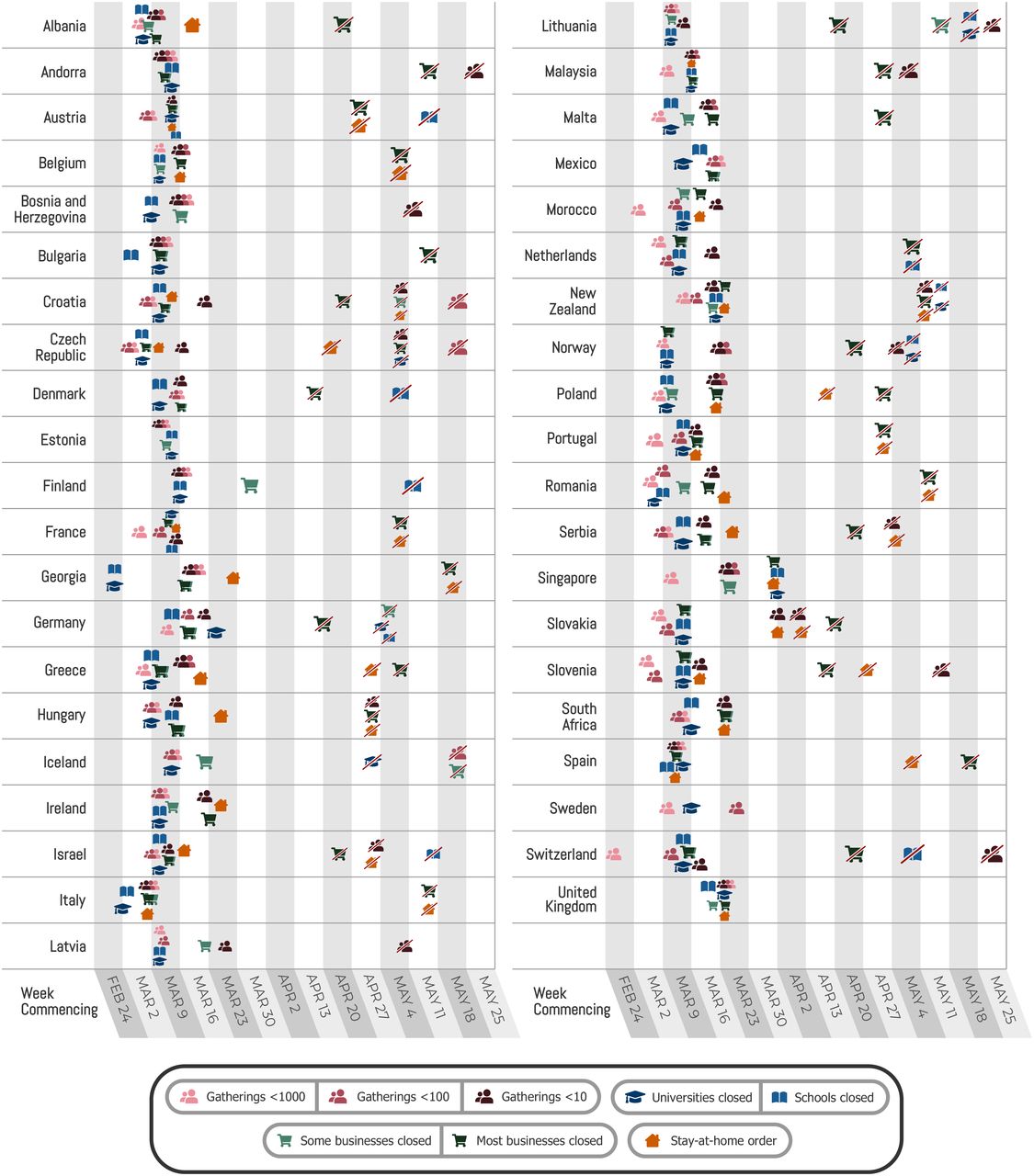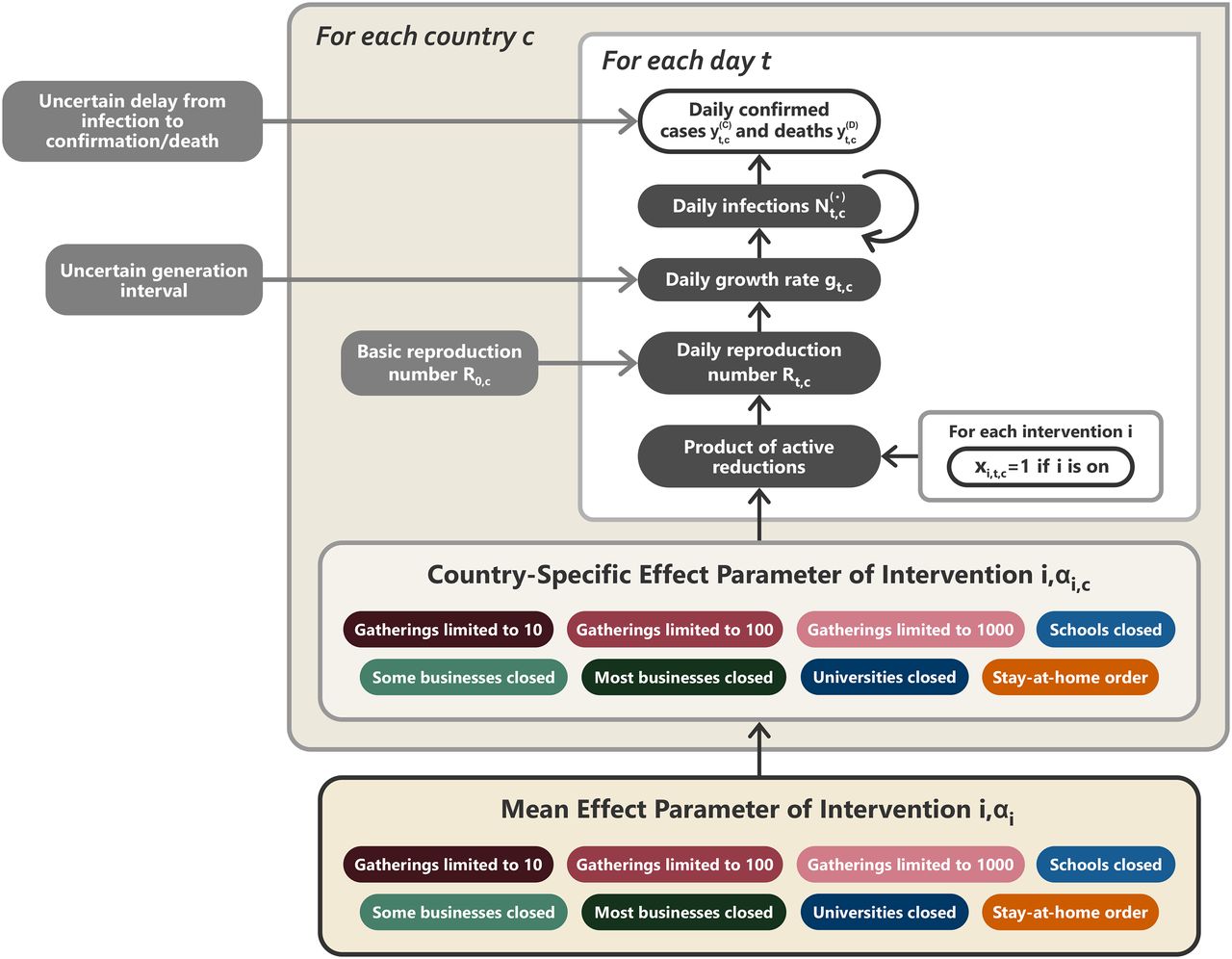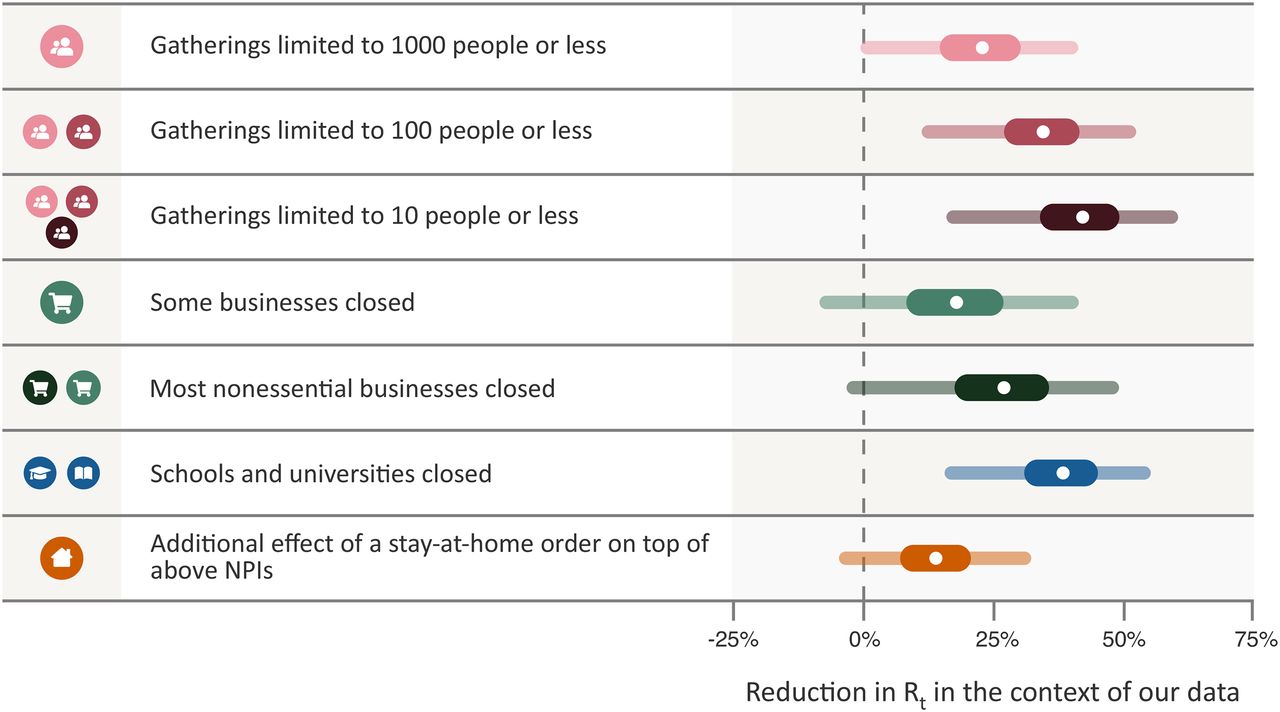Thread by Sören Mindermann
Thread
Super excited to share that **Inferring the effectiveness of government interventions against COVID-19** was just published in Science !! science.sciencemag.org/lookup/doi/10.1126/science.abd9338
Work done with amazing collaborators @JanMBrauner, @MrinankSharma ... 1/
Work done with amazing collaborators @JanMBrauner, @MrinankSharma ... 1/
and many others (see below) without whom this work would not have been possible. 2/
We know that many interventions in combination reduced transmission. But understanding the effectiveness of __individual__ interventions would help governments design policies that control transmission while also minimising socioeconomic consequences. 3/
We take a data-driven, observational approach to answer this question. We collected intervention data on 7 interventions, verified by independent double entry, across 41 countries during the first wave. 4/
We build a semi-mechanistic model that links these interventions to observed cases and deaths. By using Bayesian inference with MCMC methods we can infer the effectiveness of individual interventions. 5/
The model:
1⃣Models both cases and deaths
2⃣Accounts for uncertainty in key epidemiological parameters, such as the average generation interval
3⃣ Allows for country-specific intervention effects for all interventions 6/
1⃣Models both cases and deaths
2⃣Accounts for uncertainty in key epidemiological parameters, such as the average generation interval
3⃣ Allows for country-specific intervention effects for all interventions 6/
What do we find? Under default model settings:
1) Closing education institutions was effective.
2) Gathering bans were effective. Stricter gathering bans had more effect. 7/
1) Closing education institutions was effective.
2) Gathering bans were effective. Stricter gathering bans had more effect. 7/
3) The additional effect of closing *all* nonessential face-to-face businesses was limited compared to just closing high-exposure businesses like pubs and restaurants.
4) The additional benefit of a stay-at-home order, on top of all other NPIs, was limited. 8/
4) The additional benefit of a stay-at-home order, on top of all other NPIs, was limited. 8/
However, models make assumptions. We support our analysis with a wide range of sensitivity analyses, considering variations in data, model structure, and assumed epidemiological (prior) parameter values ... 9/
Even so, caution must be taken in interpreting these results. Our analysis is observational and we have limited ways to mitigate that. The effects are only from the first wave of the pandemic. Lifting and implementing interventions may have different effects. 10/
We’ve released our code and data. We’re excited to see what the community can do with it!
Github: github.com/epidemics/COVIDNPIs/tree/manuscript
Documentation: epidemics.github.io/COVIDNPIs/ 11/
Github: github.com/epidemics/COVIDNPIs/tree/manuscript
Documentation: epidemics.github.io/COVIDNPIs/ 11/
We’ve also developed an online effectiveness calculator so you can interactively explore our results, and adjust estimates to local circumstances.
Online calculator: epidemicforecasting.org/calc 12/
Online calculator: epidemicforecasting.org/calc 12/
Work done with this amazing team: @JanMBrauner, @MrinankSharma, David Johnston, @johnsalvatier, @TGavenciak, Anna B Stephenson, @gleech8, George Altman, Vladimir Mikulik, Alexander Norman, @jtmonrad, @tamaybes, @Hong_Ge2, @HartwickMeghan, @yeewhye, ... 13/
... Leonid Chindelevitch, @yaringal, and @jankulveit.
Led by the groups @OATML_Oxford and @FHIOxford
Mentions
There are no mentions of this content so far.



